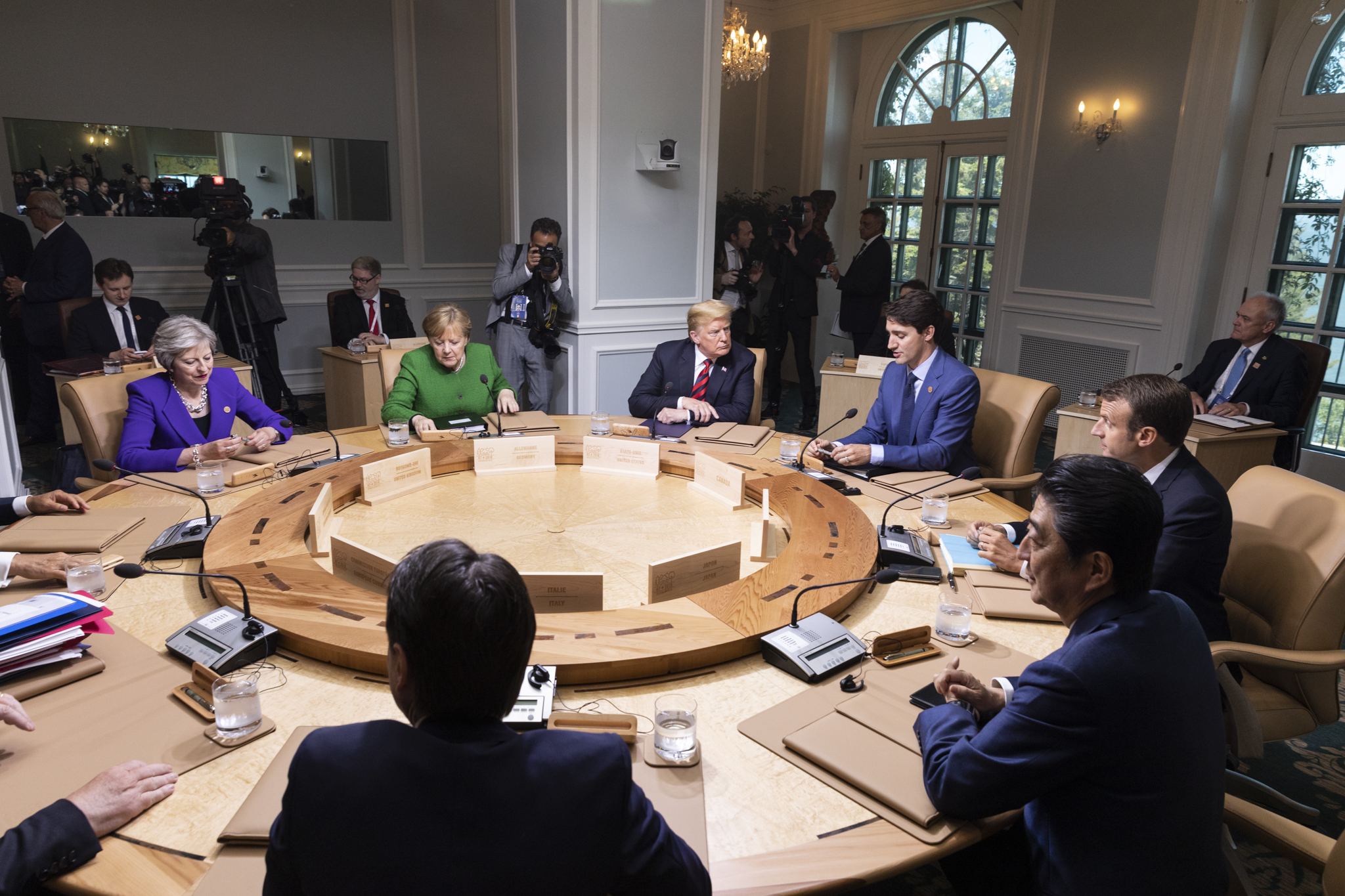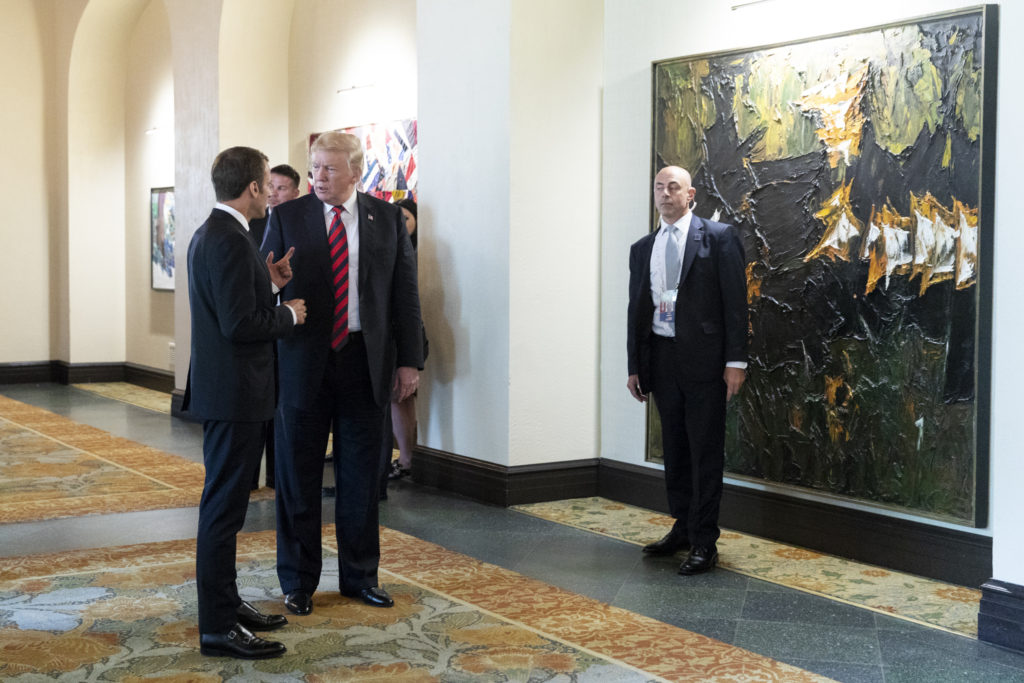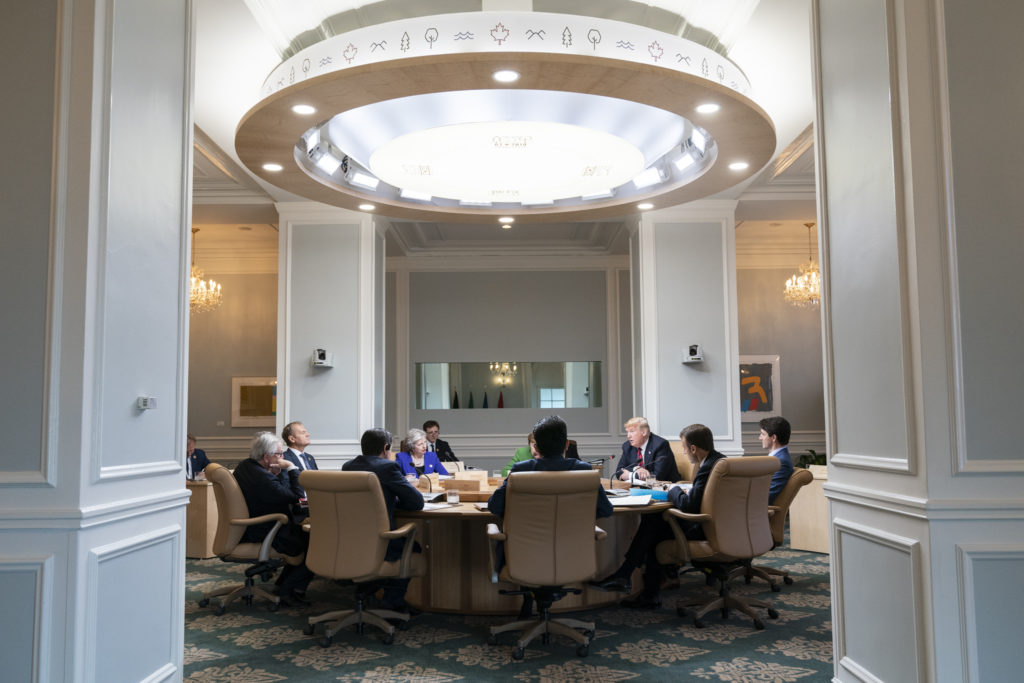How To Lose Your Allies in Two Days: A G7 Recap
 https://flic.kr/p/KUpKNN
https://flic.kr/p/KUpKNN
Last month, leaders from seven countries (Canada, United States, France, United Kingdom, Italy, Japan, and Germany), plus the European Union met in La Malbaie, Quebec, for the annual Group of 7 (G7) summit. According to the Council on Foreign Relations, the G7 is intended as a “forum for highly industrialized democracies to coordinate economic, security, and energy policy”. The G7 members make up for about 50% of the global economy and 60% of net global wealth. While G7 summits’ declarations are not binding in nature, the annual meeting allows leaders to discuss and exchange ideas directly with one another, facilitating discussion and reinforcing a long-standing alliance. Furthermore, the G7’s relative informality allows for the leaders to more swiftly create a common consensus on various issues rather than via traditional diplomacy.
This year’s discussions promised to be particularly interesting given the growing tension between the United States and the other G7 members. All seven countries usually share similar policy views, however Trump’s preference for protectionism over free trade combined with his lack of concern for climate change, clashed with the typical G7 agenda. A little more than a week before the G7 was scheduled to start, the Trump administration went ahead with imposing tariffs on imported steel and aluminum from Canada and the European Union. Both were able to avoid the tariffs when they were first announced in March, but were not so lucky the second time around in what was quite a random act. The White House justified the tariffs as a “national security measure”. In a now-famous phone call with Prime Minister Justin Trudeau, Trump referenced the 1814 burning of the White House by the British (not the Canadians) to explain how Canada could be considered a national security threat to the United States. In response, Trudeau described the United States’ position on Canada as “insulting”, and claimed that the measure would hurt Canadians and Americans alike. French President Emmanuel Macron’s response to the tariffs was similar to Trudeau’s, warning of an increase in prices and unemployment in both countries. Given the state of affairs between the United States and its allies at the time of the summit, G7 leaders had their work cut out for them upon arrival in Quebec.

Given the events of the previous week, trade dominated the talks for most of the summit. According to officials who were present, leaders would bring up the topic “repeatedly in meetings, at a lavish dinner and by a fireside pit late into the evening”. They confronted Trump on his protectionist position, and “showered Trump with data one after the other”. The U.S president replied by giving a “a long, frank rant” on his position, launching into typical Trumpian rhetoric about how the United States had entered into bad trade deals with its allies. Leaders were not able to agree on a particular solution, and the United States has since not backed down from imposing tariffs. Despite the clear lack of consensus, Trump described his relationship with other G7 nations as “a 10”.

Overshadowed by the trade discussions, two other topics were also front and centre at the summit: climate change and gender equality. While Donald Trump departed early to prepare for his summit in Singapore with North Korean leader Kim Jung-Un, other leaders stayed behind and continued discussions. The six remaining leaders reaffirmed their commitment to the Paris Agreement (which the United States had previously withdrew from). They also issued a joint statement, committing to “reduce air and water pollution and greenhouse gas emissions to reach a global carbon-neutral economy during the second half of the century”. The remaining members also endorsed the Charlevoix Blueprint for Healthy Oceans, Seas, and Resilient Coastal Communities. Finally, Canada, Germany, the United Kingdom, France, and Italy signed the Ocean Plastics Charter (Japan declined to endorse). Given the United States’ divergent view on climate change, the country released its own communique, with an emphasis on promoting fossil fuels.
Next on the agenda this G7 was the topic of women’s empowerment. Ahead of the summit, Justin Trudeau created the Gender Equality Advisory Council, which met with G7 leaders on the second day of the conference. During the meeting, Trudeau said he wanted “to see the creation of a mechanism to look at gender equality across all areas of discussion and study when it comes to the G7”. The Council used its platform during the meeting to ask for an “accelerated implementation of existing commitments by the G7 and significant progress on the Sustainable Development Goals”, according to an official UN communique. Furthermore, Trudeau pledged to invest $400 million in order to send girls in developing countries to school. Donald Trump’s presence at the gender empowerment meeting was remarked, but not for positive reasons. The American leader walked in late, prompting annoyed reactions from German leader Angela Merkel and IMF director Christine Lagarde.
While Trump praised his G7 counterparts at the summit, he seemed to have had a change of heart upon departure. He rejected the joint G7 communique, traditionally signed by all seven countries. He blamed Justin Trudeau for this decision via Twitter, claiming that Trudeau had made “false statements”, and supported trade deals that hurt the U.S. He continued, claiming he needed to put his country first: “Sorry, we cannot let our friends, or enemies, take advantage of us on Trade anymore. We must put the American worker first!” Other G7 leaders condemned his behaviour. Macron denounced Trump’s difficult attitude, insisting that “International co-operation cannot be dictated by fits of anger and throwaway remarks.” Merkel called Trump’s decision to withdraw from the communique “sobering and a little depressing”. British Prime Minister, Theresa May, claimed that this year’s G7 was “a difficult summit with, at times, some very candid discussions”.
With this G7 summit, the second with Trump as president, the divergence between the United States and its traditional allies is becoming more and more evident. Trump’s rejection of globalism is out of line with the traditional consensus shared by other Western powers, and presents a departure from decades of cooperation between members. Before leaving for the summit, President Trump pleaded for the re-inclusion of Russia in the group, a demand that was rejected by the other leaders. The summit was nicknamed the G6 + 1 by some pundits, given the obvious division between the United States and the other members. As Trump will be president until at least 2020, his presidency could prove a turning point for the G7 and potentially, an end to the decades-long alliance. If allied countries cannot properly cooperate with the United States or fail to trust Trump to carry out agreements, the G7 risks becoming obsolete. Furthermore, the current lack of unified vision between countries is damaging to the alliance because it narrows the scope of its power. If the United States’ behaviour prevents cohesion, then the G7 will not be able to present a united front when confronting other global issues, like Russian aggression or Chinese currency manipulation. Hopefully, it is the shared values and tradition of collaboration between member states that prevails in helping preserve the alliance beyond the Trump presidency.
Edited by Steven Polyakov
